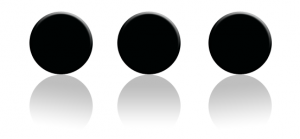 Knowing when to use dot, dot, dot, or the ellipsis as it is formally named, is something that does not come naturally to many writers, and it is one of the most commonly misused punctuation marks in existence.
Knowing when to use dot, dot, dot, or the ellipsis as it is formally named, is something that does not come naturally to many writers, and it is one of the most commonly misused punctuation marks in existence.
One of the main causes for this confusion concerns the fact that the dot, dot, dot has evolved into a punctuation mark that is frequently used in informal communications, often to denote a pause or that some information is missing. While this is perfectly acceptable, the ellipsis has been increasingly overused to the point that many people litter their writing with multiple period marks to the extent that it often loses all meaning. In this article we take a look at the ellipsis, what it looks like and, most importantly of all, when it should and should not, be used.
If the elipsis is not the only punctuation mark you struggle with, you may also appreciate our guide to the the punctuation marks everyone should master.
What an ellipsis should look like.
The clue as to the acceptable appearance of an ellipsis is in the title of this article: dot, dot, dot. That’s three dots, not four, five or more. An ellipsis should be written as a set of three, evenly spaced period marks that are separated from the surrounding text by equal spaces.
I’m not sure what to say . . . I told you that driving in the snow wasn’t a great idea.
The only time that more than three period marks should be used, is when the ellipsis occurs at the end of a full sentence, in which case the period should follow the sentence as normal, (after the dot, dot, dot):
I told you that driving in the snow wasn’t a great idea. I don’t know what else to say . . . .
When to use the dot, dot, dot.
There are generally three situations in which the use of an ellipsis (dot, dot, dot) is acceptable:
 To tell your readers that you have missed some information out.
To tell your readers that you have missed some information out.
The appearance of an ellipsis in the middle of a passage or sentence informs the reader that there is some material missing. This may occur if you have quoted a long passage and want to focus on key points as opposed to presenting the reader with the entire text. For example, if a sentence was written as follows:
“The rules clearly state that quidditch is not to be played during school hours because this is the time at which you should be studying.”
Could become:
“The rules clearly state that quidditch is not to be played during school hours . . .”
 To indicate that you have omitted a long paragraph.
To indicate that you have omitted a long paragraph.
When you omit one or more paragraphs within a long quotation, use ellipsis marks after the last punctuation mark that ends the preceding paragraph.
 To indicate a pause, or break in thought.
To indicate a pause, or break in thought.
The ellipsis can be extremely useful if you wish to express a pause in a sentence, or would like to indicate a break in the flow of the sentence:
I do understand your predicament . . . actually, no! I specifically told you that it was dangerous to drive in the snow.
Some additional rules you should be aware of:
-
- It is acceptable to use ellipsis marks at the beginning of a quotation if you have chosen to omit the opening sentence or clause. If you choose to do so, you should ensure that the dot, dot, dot is placed inside the quotation marks.
- If you do choose to use an ellipsis to indicate that information has been omitted, your sentence absolutely must retain the exact meaning of the original sentence, even though some non-essential information has been removed.
- Not all style guides agree on the use and presentation of ellipsis. You should, therefore, consult your preferred style guide to ensure that you adhere to the specific requirements.
If you are not confident with your punctuation and could benefit from having your English checked by a professional, consider ordering our affordable proofreading services.
Learn more


1 thought on “When to Use Dot Dot Dot (The Ellipsis)”
Comments are closed.